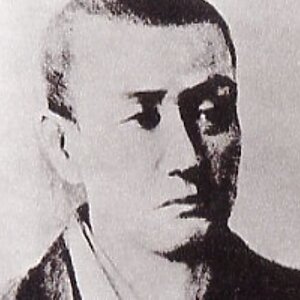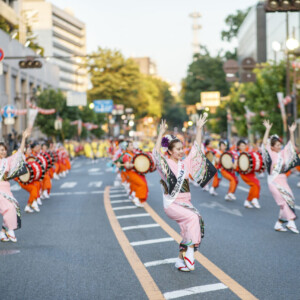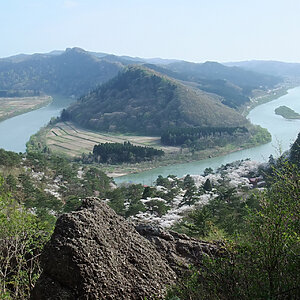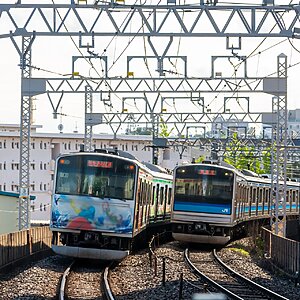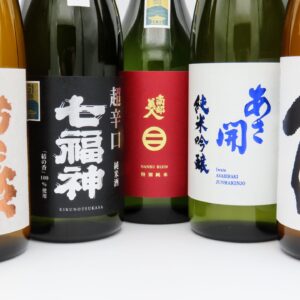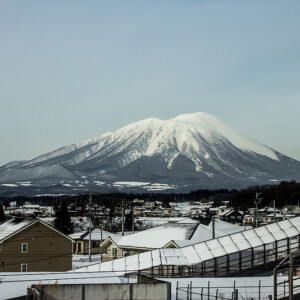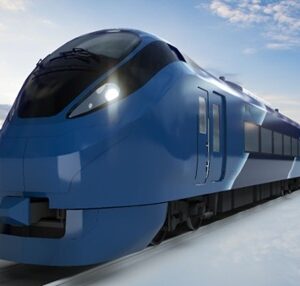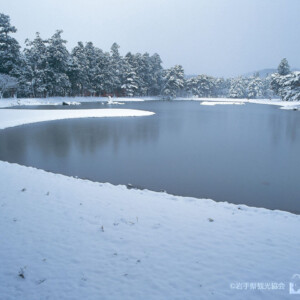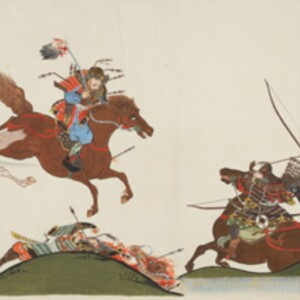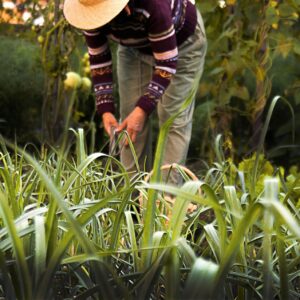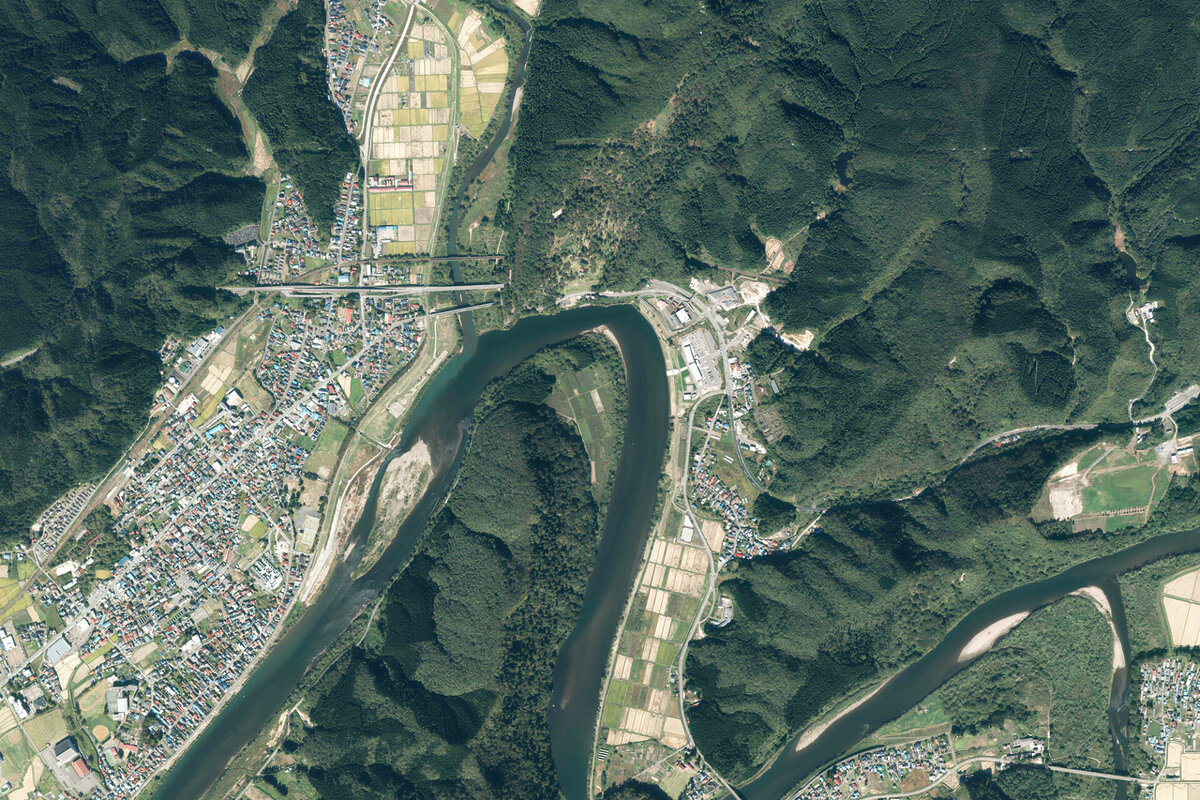
It has developed as a port for Yoneshiro River logistics, and its role is the address, and remains in modern times, "Futatsui-cho, Noshiro City" [Akita Prefecture]
table of contents
- 1 The relay station on the Yoneshiro River was restocked and restocked, so the shipment was listed.
- 2 When Fujiwara Yasuhira, chased by Minamoto no Yoritomo, flees, throws his helmet and armor near the lifting ground.
- 3 Near the loading grounds, the most difficult part of the Yoneshiro River is
- 4 Satake clan of Kubota Domain secured funds for the domain through the sale of Akita cedars.
- 5 Kagoyama Smelter, the latest smelter built at the unloading grounds
- 6 "Kagōyama Smelter" was operated as a smelter until the early Meiji period.
The Yoneshiro River crosses the central part of Noshiro City from east to west.
It departs from Nakadake (1024m above sea level), which spans Akita, Aomori and Iwate prefectures, and passes through Kosaka Town, Kakunodate City, Kitaakita City, Odate City, and then pours into the Sea of Japan in Noshiro City. The basin was home to Akita cedar forests and the Shirakami Mountains, a World Heritage Site, and the cut wood was transported to Noshiro by the Yoneshiro River and shipped nationwide.
In addition, mines such as the Oirase Mine (Osarizawa Kozan/Kakunodate City), Kosaka Mine (Kosaka Kozan/Kosaka Town), and Ani Copper Mine (Ani Dozan/Kita Akita City) have been developed in the area since the Edo period, and have played an important role in transporting the products.
The relay station on the Yoneshiro River was restocked and restocked, so the shipment was listed.
The Yoneshiro River is about 35km from the mouth of the estuary, and there is a large meandering like a hairpin curve. In addition, the Fujikoto River (Fujikoto River) from the north and Anigawa (Anigawa) from the south join in, and the flow is complicated and has long been known as the most difficult part of the Yoneshiro River.
There were many docks in this area, and the largest port was built at the junction with the Fujikoto River.
At the end of the Sengoku period a listing of cargo (niagaba) , and it became a large village that was called a listing village (Futatsui-cho, Noshiro City). Akita cedar, which was transported from the Yoneshiro River and tributaries, was listed on a large raft and sent to Noshiro Port at the mouth of the river.
In addition, the daily supplies of the residents were transported from Noshiro Port to the unloading grounds by large sail boats called Chosho Zuai Boat " and transported upstream.
When Fujiwara Yasuhira, chased by Minamoto no Yoritomo, flees, throws his helmet and armor near the lifting ground.
Based on the investigation of the ruins, it is believed that people lived along the Yoneshiro River, which is around the listing of the shipment, during the Jomon period. In 658 during the Asuka period, Abe Hirafu Court passed through this area when he marched to conquer the unexplored Tohoku region, an unexplored land known as the Emishi
It is believed that in the late Heian period, powerful clans such as the Kiyohara clan and the Oshu Fujiwara clan switched over and placed Futatsui under their control.
Fujiwara Yasuhira (1155-1189), the last head of the Oshu Fujiwara clan, was attacked Minamoto Yoritomo (1147-1199) after hiding Minamoto Yoshitsune (1159-1189), and fled north from Oshu Hiraizumi (Hiroizumicho, Iwate Prefecture ) .
At that time, I threw my helmet on a cut stone (Kiriishi/Futatsuimachi Kiristone) close to the listing of the shipment, and my armor on a Usui (Usui/Futatsuimachi Usui) in Noshiro City. the people in the village pity Yasuhira and built Kabuto Shrine on the cut stone and Yoroi Shrine to mourn them.
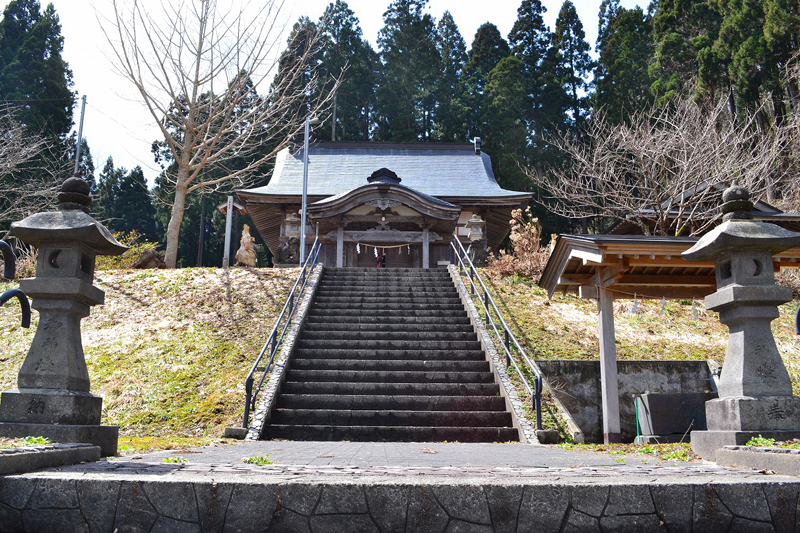
Kabuto Shrine <Information>
- Facility name: Kabuto Shrine
- Location: Yamane 8, Kiriishi, Futatsuimachi, Noshiro City, Akita Prefecture
- Phone number: 0185-73-5075 (Futatsuicho Tourism Association)
- Public Transportation/Approximately 5 minutes by taxi from Futatsui Station on the JR Ou Main Line
- Car/Approximately 7 minutes from Futatsui Shirakami IC on the Akita Expressway
Google Map
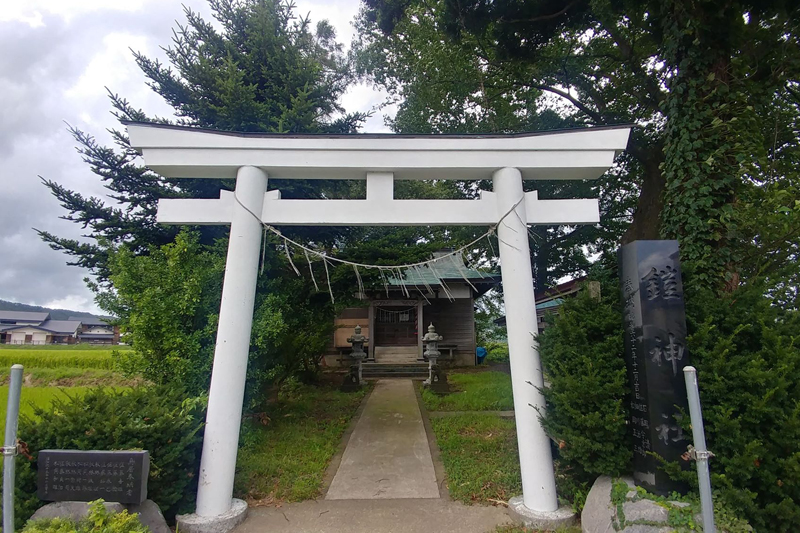
Yoroi Shrine <Information>
- Facility name: Yoroi Shrine
- Phone number: 0185-73-5075 (Futatsuicho Tourism Association)
- access:
- Public Transportation/Approximately 7 minutes by taxi from Futatsui Station on the JR Ou Main Line
- Car/Approximately 5 minutes from Futatsui Shirakami IC on the Akita Expressway
Google Map
Near the loading grounds, the most difficult part of the Yoneshiro River is
The area around the Yoneshiro River, which was said to be the most difficult part of the Yoneshiro River, was a dangerous place not only for the river flow but also for the overland.
The riverbank is a high cliff, and to continue further, you will need to either take a rough mountain path or cross the Yoneshiro River by boat. This boat is only about 1km from the listing of the cargo and the neighboring village Kotsunagi (Katsunagi/Futatsuimachi Kotsunagi, Noshiro City), but it was called Ichiri no Tabi
It is said that the procession of the Tsugaru Domain, which took place in the Sankinkotai, used the ``Take no Mi'' to travel back and forth between Edo.

On the other hand, the mountain path a dazehihihihi and was not used much.
It was built during the Meiji period and during the Meiji era, Emperor Meiji's 14th year's cruise (inspection of the Tohoku region), and the Emperor and his group headed along this path to their next visit. While taking a break, I received a letter to the Emperor from the empress worried about the parade, and after reading it, the Emperor was moved and named Kimimachisaka
Currently, it has become a popular park, including in the surrounding area, as the Kimimachi-saka Prefectural Natural Park
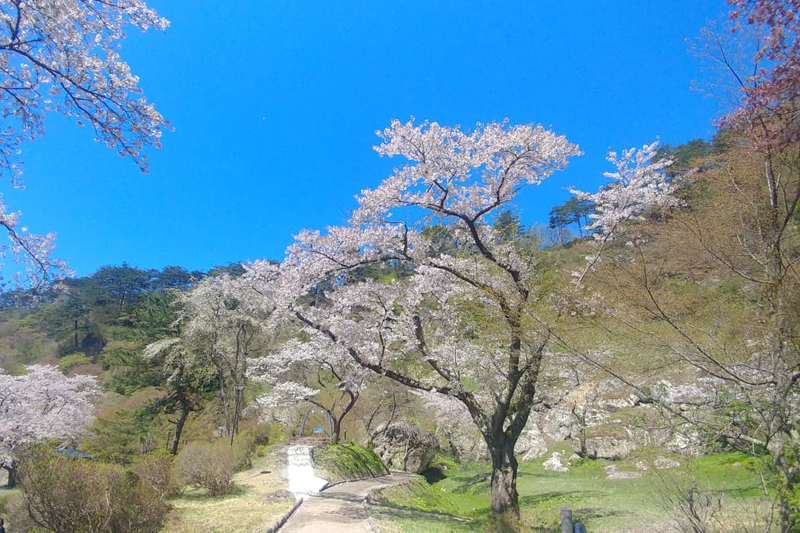
Kimimachi Osaka Prefectural Natural Park <Information>
- Facility name: Kimimachi Osaka Prefectural Natural Park
- Location: 51 Kotsuneizumi, Futatsuicho, Noshiro City, Akita Prefecture
- Phone number: 0185-73-5075 (Futatsuicho Tourism Association)
- access:
- Public Transportation: Get off at Futatsui Station on the JR Ou Main Line, about 9 minutes by Futatsui Community Bus, Roadside Station Futatsui Bus Stop (Community Bus are closed on Sundays and public holidays), about 5 minutes by foot, or about 5 minutes by taxi
- Car/Approx. 10 minutes from Futatsui Shirakami IC on the Akita Expressway, or 15 minutes from Odate Noshiro Airport IC on the Akita Expressway
Google Map
Satake clan of Kubota Domain secured funds for the domain through the sale of Akita cedars.

Satake, appointed as the ruler of the Akita region during the Edo period, focuses on Akita cedars
Akita cedar was attracting attention as a building material since Toyotomi Hideyoshi's period, and was used to build Fushimi Castle in Kyoto, but in the Edo period it was also used to create towns in Edo, reaching its peak in popularity . The listing will be a central collection of Akita Cedars and will prosper with Noshiro Minato.
However, large quantities of Akita cedars were used to recover from the Meikei fire that occurred in Edo in 1657, causing rapid declines in forest resources. The Kubota Domain, which had a strong sense of crisis, created a system to restrict logging and strived to protect resources, but it did not produce any results.
Meanwhile, the Kubota domain is actively developing mines, and discovers many mines in the mountains around the loading grounds. the Anidozan Copper Mine which was later said to be the number one copper mine in Japan, and the ancient Tara Mine (Daira Kozan/Fusato Town, Akita Prefecture), began full operation. The product is collected in a listing of tributaries, just like Akita cedar, and is transported to Noshiro Minato.
This helped the Kubota Domain's finances recover, but there was one headache. The Ani Copper Mine was produced in large quantities, but it was mixed with impurities, so it was not well received by the Edo Shogunate.
Therefore, the Kubota Domain (Akita Domain) plans to build a new smelter in the village of Kakusho.
Kagoyama Smelter, the latest smelter built at the unloading grounds
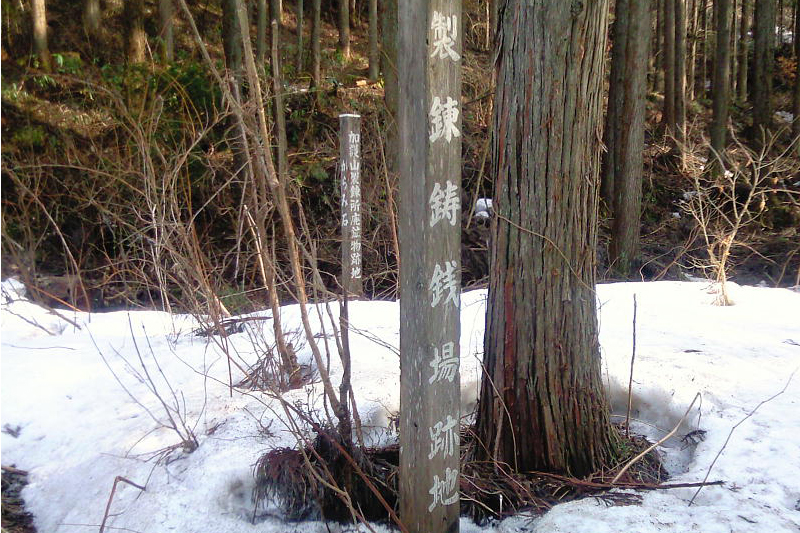
In addition to being a port for loading copper mines, the listing was also a collection of wood (cedar wood) that was used as the heat source to melt the ore needed for smelting. Furthermore, the Tara Mine, which was located on the upper reaches of the Fujikoto River, produced the lead, which is necessary as a catalyst for separating copper and silver. Also, since it was a large village, there is no need to worry about manpower.
In 1775, the new smelter was completed at Kagoyama, a village listed on the Kagoyama village, and was named Kagayama Smelter
To build this smelting plant, the Kubota domain hears that there is a scholar in Edo who knows how to remove copper using the latest smelting methods, and invites the person to Akita. Hiraga Gennai (1728-1780), the scientist who invented Electricalkiter, a doctor and a mining consultant
taught me a smelting method called Nanban Fuki which uses lead to remove the silver and impurities contained in rough copper
Kagoyama Smelter, which used Nanban Fuki, succeeded in producing copper and silver that were close to pure, bringing great benefits to the Kubota Domain. In particular, the Kagoyama Smelting Plant created a secretive collection of silver coins and copper coins that are only available within the Kubota Domain, and is said to have contributed greatly to the domain's financial maintenance.
"Kagōyama Smelter" was operated as a smelter until the early Meiji period.
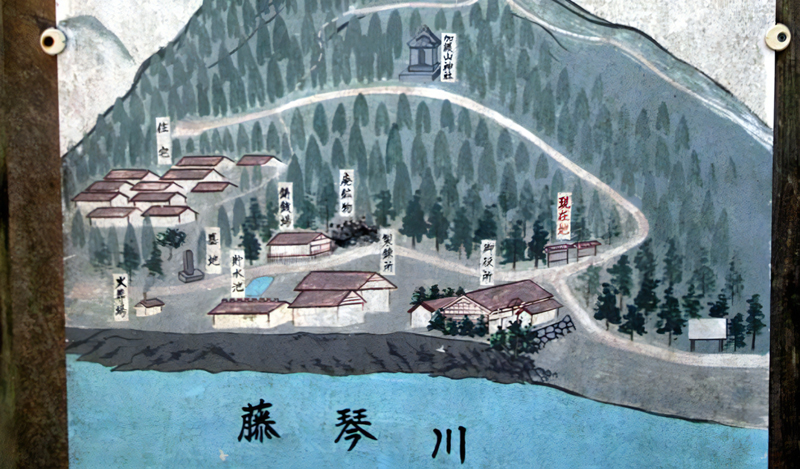
The Kagoyama Smelter was abandoned in 1894 (Meiji 27) as the latest Shinonome Smelter was built in Mukai Noshiro, near Noshiro Port by Furukawa Mining, which owned the Ani Mine at the time.
The remains of the Kagoyama Smelter include the remains of the reservoir, the residential stone walls, and Kagoyama Shrine, but there are no buildings.
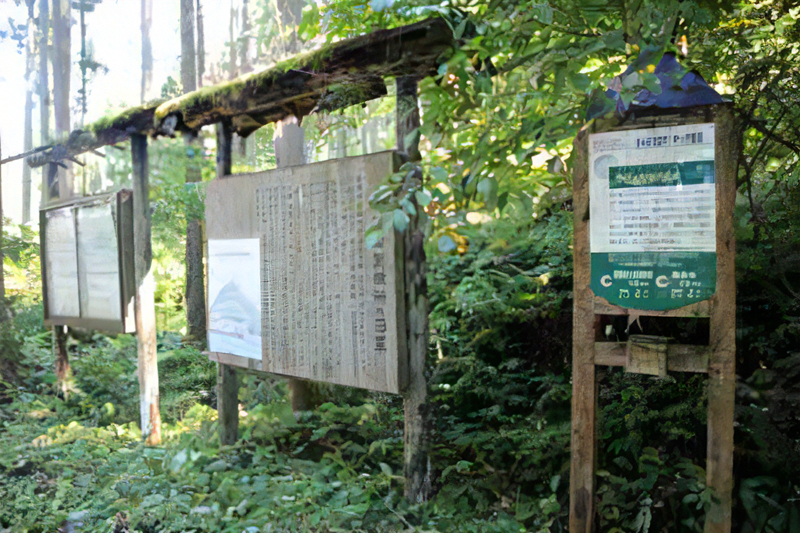
Kagoyama Smelter Remaining <Information>
- Facility name: Kagoyama Smelting Station
- Location: Kagoyama, listed in Futatsui-cho, Noshiro City, Akita Prefecture
- Phone number: 0185-73-5075 (Futatsuicho Tourism Association)
- Visit: Free
- access:
- Public Transportation/At the JR Ou Main Line Futatsui Station, or 10 minutes by community bus or taxi
- Car/Approximately 10 minutes from Futatsui Shirakami IC on the Akita Expressway
Google Map
Although the listing of cargo was developed as a base for water transportation, in the Meiji period, the distribution method changed from water transportation to land transportation.
In 1901 (Meiji 34), a station on the Ou Main Line was built in Futatsui (Futatsui Ota-me, Noshiro City), near the listing of the cargo. At the same time, it opened to Noshiro Station (now Higashi Noshiro Station), and its distribution hub has changed from Kago to the area around Futatsui Station.
Kaoriba Village was an independent local government until 1955 (Showa 30), but it merged with Futatsui Town, which was centered around Futatsui Station, and became part of Futatsui Town. Furthermore, in 2006, Futatsui merged with Noshiro City and became Noshiro City, and it is now listed as Futatsui Town, Noshiro City.


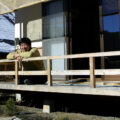
![[Akita Prefecture] Kosaka Town is a town that has taken you back in time to the Meiji era. Cultural heritage left behind by Kosaka Mine 1_22](https://jp.neft.asia/wp-content/uploads/2023/07/1_22-150x150.jpg)
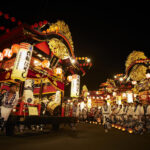
![The Ani Mine, which was said to be the number one in Japan during the Edo period and supported the Kubota Domain [Kita Akita City, Akita Prefecture] Ani Mine](https://jp.neft.asia/wp-content/uploads/2024/04/anikouzan-150x150.jpg)
![The popular game "Matagi" started in Kitaakita City! [Akita Prefecture] matagi](https://jp.neft.asia/wp-content/uploads/2024/04/matagi-150x150.jpg)
!["Isedodai Ruins" is a mysterious ruin registered as a World Heritage Site! [Akita Prefecture] Model of Isedotai ruins (Isedotai Jomonkan)](https://jp.neft.asia/wp-content/uploads/2024/04/deb17445343a914a827ad485a5591592-150x150.jpg)
![Akita Cedar, which has been close to people's lives since ancient times, is a close look at the reasons and secrets [Akita Prefecture] Ninfu Mizusawa Cedar Rare Population Protection Forest (Noshiro City, Akita Prefecture)_Travel Tohoku](https://jp.neft.asia/wp-content/uploads/2025/05/792bcbe7d9fd514753f4deeaca3de33f-150x150.jpg)

![Kosaka Railway Rail Park where you can stay at the former JNR Blue Train [Akita Prefecture] 1007675_5_l](https://jp.neft.asia/wp-content/uploads/2023/11/1007675_5_l-150x150.jpg)
